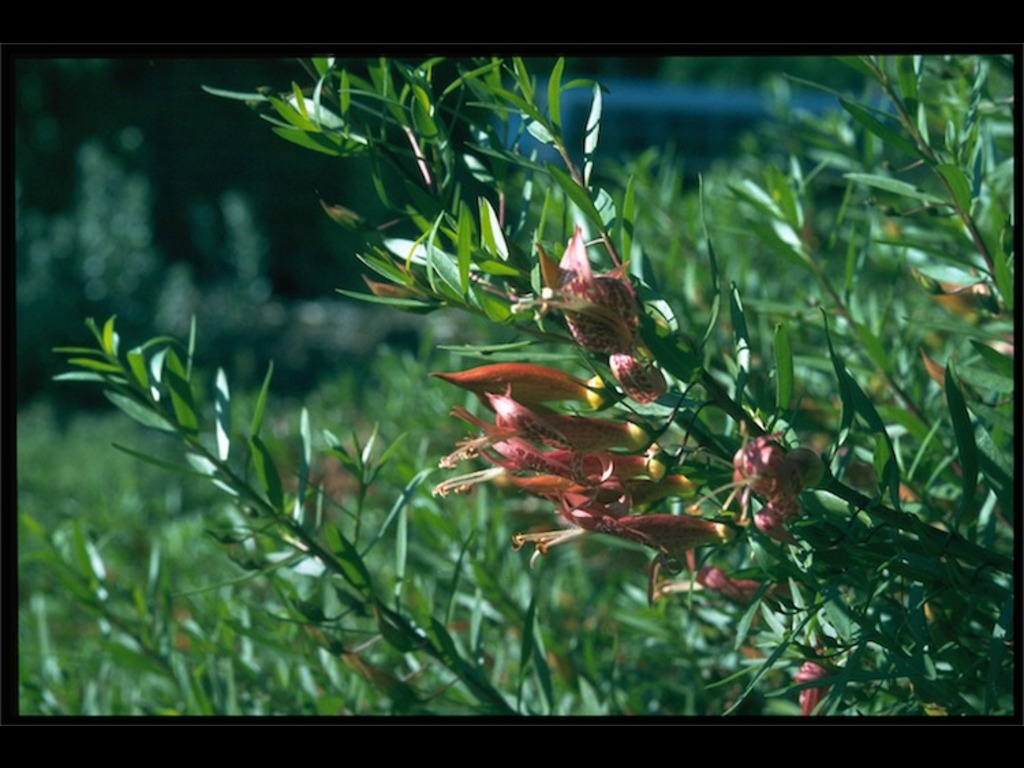Eremophila maculata 'Carmine Star'
- File Number
- 313
- ACRA Field Book Number
- 30
- Registration Date
- 25/10/1986
- Application Received
- 30/11/1983
- Family
- Scrophulariaceae
- Cultivar Name
- Eremophila maculata 'Carmine Star'
- Origin
- Eremophila 'Carmine Star' originated in southern Queensland in the vicinity of Goondiwindi (K Warnes pers. comm. with applicant). It is a form of Eremophila maculata and has been known in cultivation for approximately 20 years (from date of application). Cultivar received by the Authority on 30 November 1983. Registration applied for by the Eremophila Study Group of SGAP c/o RJ Chinnock, Adelaide Botanic Garden, North Terrace, Adelaide 5000.
- Characteristics
- This cultivar is a prostrate to decumbent shrub .5m tall by 1 to 2m wide. The non-interlacing branches are purplish in colour, turning yellow brown as they age. The branches are warty in appearance and otherwise glabrous. The leaves are narrow elliptic in shape. The flowers are solitary and carmine in colour while inside they are rose coloured but marked with prominent carmine spots except at the tips of the lobes. The lobes have long white wispy hairs up to 9mm long. The flowering season in Adelaide is from October to November. Diagnosis: E. maculata 'Carmine Star' can be distinguished from the common form of E. maculata in eastern Australia by it's decumbent sprawling habit with non-interlacing branches. Other notes: The cultivar is widespread in cultivation in Adelaide at the time of writing (May 1985). It has good drought resistance but may burn in heavier frosts. It is also known to be tolerant of humidity. Vegetative means must be used to preserve the cultivar form.
- Cultivation
- The cultivar grows best in an open, sunny position. Good drainage is required, and it responds well to watering
- Publication
- Growing Eremophila, R. Wait, 2021. p267
- Colour Coding
- RHS Colour Code1966 perianth tube (outside): greyed purple group 184C spots on inside of tube: greyed purple group 185C
- Propagation
- Cuttings or grafting onto suitable rootstock such as Myoporum.
- Applicant Name
- RJ Chinnock, Adelaide Botanic Garden
- Uses
- As part of the shrubbery, or as a showy feature plant
- Availability
- Specialist native plant nurseries
- ANBG Accession Numbers
- Accession Number 313.
- NSL ID
- -

